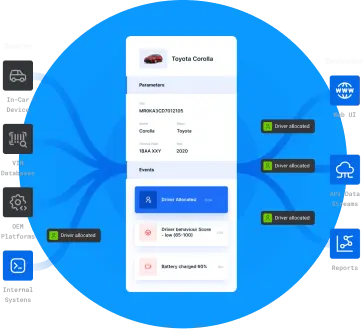Hurricane season in the Northern Hemisphere spans from June 1 to November 30. During this period, truck drivers must take proactive measures to ensure their safety and the security of their vehicles. Implementing a comprehensive hurricane preparedness plan is essential for navigating the challenges posed by severe weather conditions.
1. Advance Preparation
Before a storm threatens, it’s crucial to have a well-thought-out plan. This includes stocking up on essential supplies such as food, water, and medications to avoid last-minute shortages. Ensuring your truck is equipped with necessary tools and equipment will facilitate quick and efficient responses when adverse weather approaches.
2. Assemble an Emergency Kit
Creating a comprehensive emergency kit is vital for safety during unforeseen events. Essential items include:
- Flares
- Flashlights
- Battery-operated weather radio
- Paper maps with marked shelters and fuel stations
- Cash
- Non-perishable food
- Water
- Change of clothes
- Battery-based chargers for electronic devices
Having these supplies readily available ensures preparedness for emergencies.
3. Develop an Emergency Plan
Establishing a clear emergency plan is essential. Identify safe locations to park your truck and trailer, and familiarize yourself with nearby storm shelters. In flood-prone areas, position vehicles on elevated ground and group them together to minimize movement caused by high winds. Utilizing a truck-specific road atlas with highlighted evacuation routes and shelter locations is advisable, as GPS services may be unreliable during severe weather.
4. Familiarize Yourself with Evacuation Routes
Understanding and planning multiple evacuation routes is critical. Collaborate with your company and fellow drivers to determine the safest paths, adjusting as necessary based on the hurricane’s trajectory. Regularly consult emergency management resources in coastal states for updated evacuation information.
5. Identify Emergency Shelters
Knowing the locations of emergency shelters along your route is imperative. Coordinate with your management team and other drivers to pinpoint suitable shelters, marking them on both your GPS device and physical maps to ensure accessibility during emergencies.
6. Manage Fuel Resources
Maintaining adequate fuel levels is essential during hurricane season. Steps include:
- Keeping your tank full
- Filling emergency fuel cans
- Choosing fuel-efficient routes
- Avoiding practices that lead to unnecessary fuel consumption, such as excessive idling and speeding
Proactive fuel management helps mitigate the impact of potential shortages and price surges.
7. Stay Informed About Weather Conditions
Utilizing multiple sources to monitor weather developments is crucial. Battery-operated weather radios and reliable weather applications provide timely updates, enabling you to adjust plans according to changing conditions. Given the rapid evolution of storm paths, staying informed is a key aspect of safety.
8. Allocate Extra Travel Time
Severe weather can lead to road closures and increased traffic. Incorporating additional time into your schedule reduces the pressure to drive in unsafe conditions, allowing for cautious navigation and adherence to safety protocols.
Enhance Safety with Rand McNally Solutions
For over a century, Rand McNally has been a trusted partner for drivers, offering tools and resources to promote safety and efficiency. Our range of driver electronics, including GPS truck tablets and the latest edition of the Motor Carriers’ Road Atlas, provides reliable navigation and critical information to support you during hurricane season and beyond.
Explore our driver electronics line to find the tools that best suit your needs and ensure you’re prepared for any challenges on the road.
By implementing these strategies and utilizing Rand McNally’s trusted resources, you can enhance your preparedness and safety during hurricane season.





